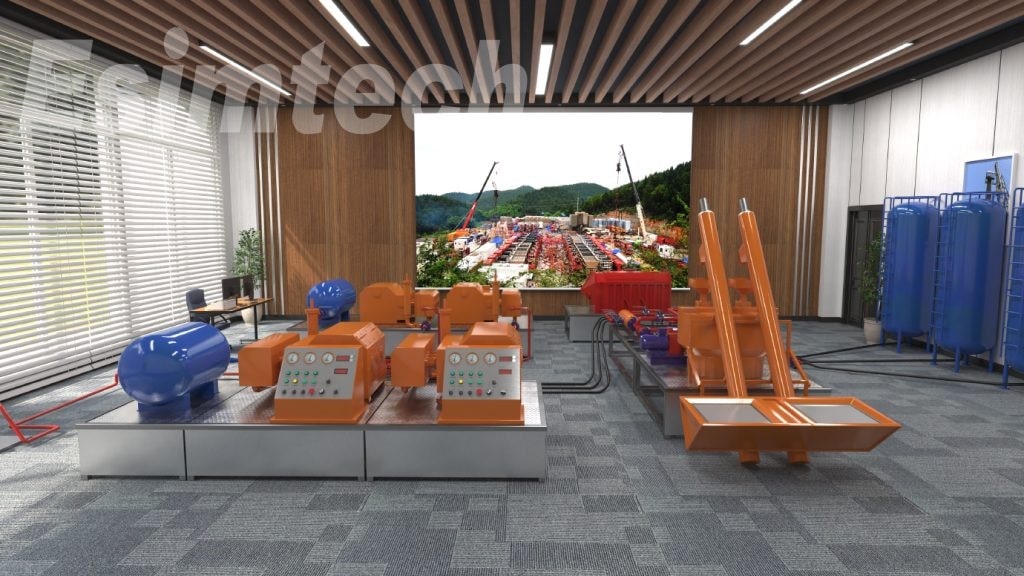Environmental Management of Fracturing and Acidizing Process
Fracturing and acidizing are important measures to reform oil(gas) beds and have obvious effects on restoring and improving the production capacity of oil wells. The demand for oil and natural gas is increasing day by day, so the fracturing and acidizing technology of oil and gas wells is widely used as an important technical means for oil field stimulation. However, this technology will generate a large amount of wastewater, waste gas, waste liquid, and solid waste during the operation, which will pollute the atmosphere, water, and soil to varying degrees.
What are the Types of Pollutants?
- The waste liquid is produced in fracturing and acidizing operations. The main types are the waste liquid of fracturing fluid in fracturing construction, the residual liquid of various liquid additives, and the gel produced by equipment leakage during construction, etc.
- Exhaust gas is generated during fracturing and acidification. The main types are the exhaust gas produced by the volatilization of various acids in the acidification operation, the exhaust gas caused by the pump truck, and so on.
- The solid waste is generated during fracturing and acidification. The main types are residues produced in the use of gel breakers and proppants, etc.
- Other pollutants.
-1-1024x576-min.jpg)
How does the Fracturing and Acidizing Operation Pollute the Environment?
- Fracturing waste fluid has a high viscosity and high organic content. When the waste liquid is discharged into the water body, a film will be formed on the water surface, preventing the oxygen in the air from entering the water body, resulting in the death of aquatic animals due to lack of oxygen. When the waste liquid enters the soil, it will block the plants from absorbing the water and nutrients they need, causing the vegetation to die.
- The exhaust gas produced by the volatilization of various acid gases in the acidification operation and the exhaust gas produced by the pump truck operation not only pollute the atmosphere but also directly cause human and animal poisoning.
- During the fracturing and acidizing operation, the gel breaker can react with pipes, formation matrix, etc. to generate pollutants and cause formation damage. Solid residues from proppants and gel breakers can also contaminate soil and indirectly harm animal health.

How do Carry Out the Environmental Protection Management of the Fracturing and Acidizing Process?
1. Improve the environmental protection management system
It is necessary to improve the environmental management system of fracturing and acidizing operations. First of all, comprehensively analyze the overall situation of environmental protection in fracturing and acidizing operations and discover the rules, carefully analyze the environmental protection process, and then formulate a detailed work plan, put forward a perfect work process, and preventive and emergency measures.
2. Establish a sound regulatory system
In the process of fracturing and acidizing construction, regular inspections should be carried out, and on-site supervision should be done well.
Carefully inspect the environmental protection work in fracturing and acidizing work, conduct a comprehensive assessment of the performance of management personnel, especially do a good job of punishing illegal operations, and formulate an effective reward and punishment management mechanism.
3. Regular training for operators
Through regular training for operators, employees can identify the causes and treatment measures of fracturing fluid and toxic gas leakage in a timely and effective manner, and improve the professional quality of construction personnel.
Regularly organize operators to study relevant environmental protection laws and strengthen their environmental awareness.
4. Ensure that the equipment is in good condition
The integrity of the equipment can reduce the probability of pollution incidents or hazards and ensure the quality of fracturing operations.
5. Timely and effective treatment of pollutants
The treatment process of fracturing and acidifying pollutants should be continuously optimized and improved. We should try our best to eliminate the use of methods such as digging and landfilling. To treat water pollutants, high-temperature incineration can be used to oxidize and decompose the organic matter in the pollutants to produce carbon dioxide and water. At present, the more popular pollution treatment method is the reuse method. Because this method can reduce the cost in the process of oil and gas extraction to a certain extent.
6. Promote the use of advanced technologies
- Use of cleaning materials
It is necessary to vigorously develop and use clean raw materials to reduce the possibility of pollutant emissions from the source.
- Use of continuous compounding fracturing fluid and liquid dispensing device
The traditional manual liquid dispensing method has problems such as long liquid dispensing time, high labor intensity, easy liquid corruption, and a serious waste of residual liquid. The use of a new type of continuous compounding device can reduce the pollution of the remaining liquid to the environment.
Esimtech develops and produces the fracturing and acidizing simulator, which is a fracturing and acidizing simulation training platform strictly based on production site devices. The simulation system enables students to directly understand the real work process and master the corresponding skills.



-1-1024x576-1.jpg)
